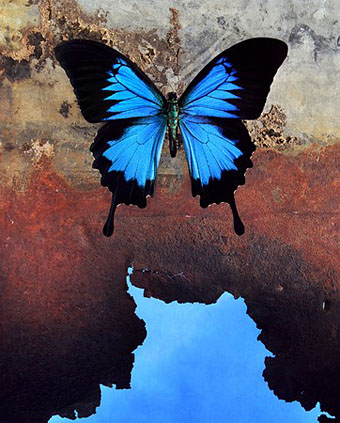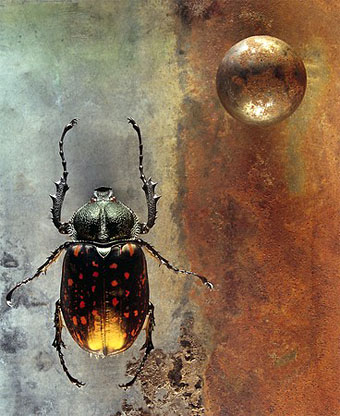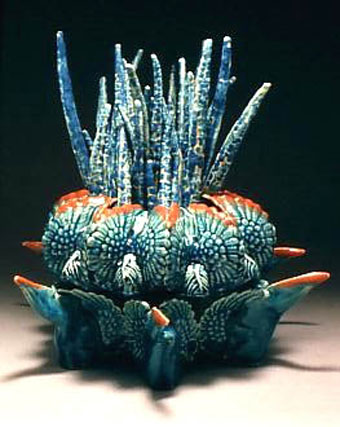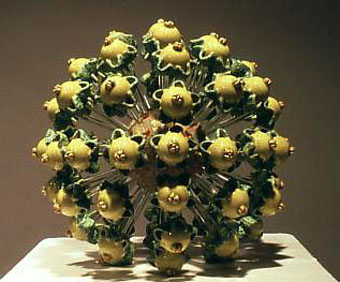A temple to mystery and imagination
| The Large Hadron Collider.
Category: {science}
Science
‘Father of LSD’ dies aged 102
‘Father of LSD’ dies aged 102
| Albert Hofmann, RIP.
The art of Jo Whaley
Papilio ulysses (2000).
Best. Insect Art. Ever. From a series entitled The Theater of Insects, also the name of a book devoted to Ms Whaley’s photographs which will appear from Chronicle Books later this year.
The photographs in this book are fantastic field illustrations. While the insects in these images are real, the backgrounds are imaginary altered habitats of my devising. Inspired by the old dioramas found in natural history museums, the pinned insects are arranged in constructed environments. The studio where I create the images is as much a theatrical scene shop as it is a photography studio. The prop room looks like an eighteenth-century cabinet of curiosities, in that it is filled with specimens of natural history and visual oddities of manufacture. I use free association and intuition to make decisions about arranging the insect with a particular backdrop. Looking at color, shape, and form, I move the elements about until the magic of the image appears. Lighting the scene is challenging as the sets are only about five by seven inches across with a depth of about an inch and a half. Yet the studio lighting is key to breathing a spirit into these pinned specimens and unifying the disparate elements within the mise-en-scène Finally, the performance of the image is concluded with a single click of the camera’s shutter. (More.)
Coleoptera (2003).
Via Fabulon.
Previously on { feuilleton }
• Endangered insects postage stamps
• Robert Lang’s origami insects
• Lalique’s dragonflies
• Lucien Gaillard
• Wesley Fleming’s glass insects
• Insect Lab
Endangered insects postage stamps
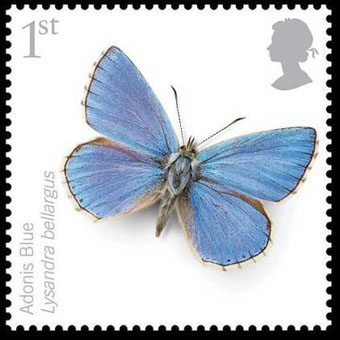
Adonis Blue Butterfly.
Beautiful stamps for the second in a Royal Mail series intended to bring attention to endangered species. These will be issued on Tuesday and are designed by Andrew Ross using photography from the Natural History Museum. The Independent notes the irony of the Royal Mail printing these even as they’re building a new distribution depot at West Thurrock which will destroy natural habitats. Invertebrate Conservation Trust Buglife had tried and failed to prevent the development.
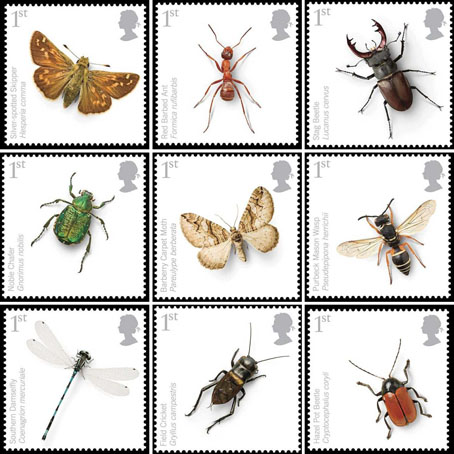
top: Silver-spotted Skipper, Red Barbed Ant, Stag Beetle.
centre: Noble Chafer Beetle, Barberry Carpet Moth, Purbeck Mason Wasp.
bottom: Southern Damselfly, Field Cricket, Hazel Pot Beetle.
Previously on { feuilleton }
• Robert Lang’s origami insects
• James Bond postage stamps
• Lalique’s dragonflies
• Lucien Gaillard
• Wesley Fleming’s glass insects
• Please Mr. Postman
• Insect Lab
The art of Ying-Yueh Chuang
Plant creature 1 (2001).
Ying-Yueh Chuang’s ceramic sculptures are based on plant and animal forms, especially sea life. I haven’t seen any mention of her being inspired by Haeckel’s Art Forms in Nature but many of her creations certainly resemble the plants and animals in Haeckel’s illustrations.
It blooms on the day 1 (2004).
Via Fabulon.
Previously on { feuilleton }
• The art of Jennifer Maestre
• Kirsten Hassenfeld’s paper sculptures
• Darwin Day
• The glass menagerie

